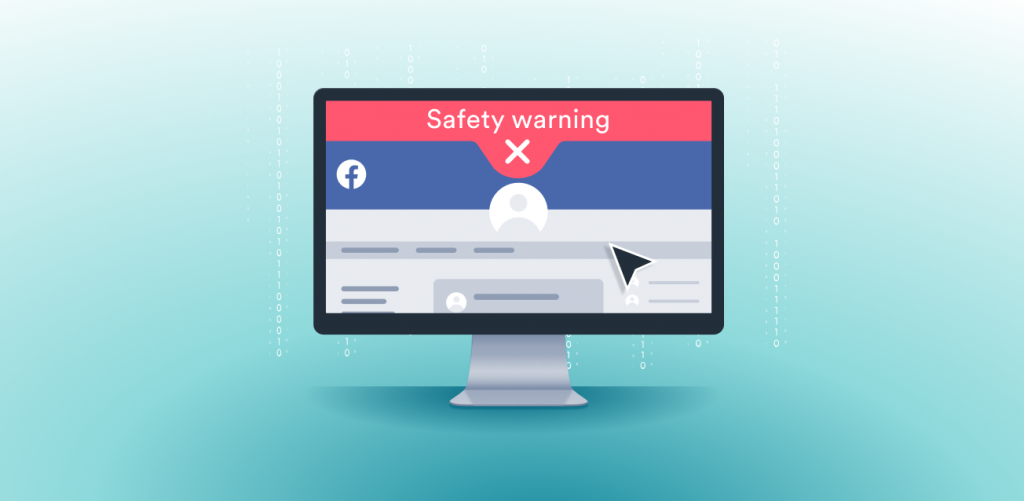
At Surfshark, we’re constantly searching for innovations and ways to give you the best all-over security, from encrypting your internet traffic to ensuring the safety of your personal ID. This time we focused on a new cybersecurity threat, the little eye that is always in front of you – the webcam.
Table of contents
Why do you need webcam protection?
Because your camera, like every app on your device, can be hacked. After successfully gaining access to your webcam, hackers can watch you 24/7 and gather some sensitive information.
In cybersecurity, webcam hacking is called camfecting – infecting your camera with malware and remotely accessing its footage. Criminals use specific malware that allows them to use your camera without any indications, so even the little LED light showing your camera’s activity will be off.
That sounds more like a horror movie plot than reality, but the scariest part is that malicious actors accessing webcams is the reality that inspires scriptwriters.
How can my webcam be hacked?
When talking about how a malicious actor accesses your webcam, all eyes are on you (we hope not literally).
One way you can give access to your device is by falling for a legit-looking phishing attack. It goes like this: you click on a malware-filled link, malicious software silently gets planted on your device, and a webcam-affecting virus starts doing its evil job without you noticing a thing.
Another way to compromise a webcam’s security is installing malware-filled but legit-looking applications on your device. In this case, you download a new game without knowing it is filled with malicious software. It may seem that everything went smoothly. However, a simple game can do very complex things behind your back if it’s filled with malware.
For the human eye, it is hard to see which app is legit and which may cause damage. Here’s where the Surfshark Antivirus software steps in, determines those apps, and secures your webcam.
Do I need webcam protection if I have an antivirus?
In short – yes. Even better – search for an antivirus with a webcam protection feature straight away.
If you’re looking for a more detailed explanation, let’s go back to the malware-filled but legit-looking applications. You can install an app that is not malicious on its own, and its code will look legit to the antivirus software. However, that legit app can transmit your webcam data straight to the hacker’s hands.
What’s more, any apps you already have on your device can be hacked. You heard that right. Any of your beloved and trusted apps can have vulnerabilities in their code, and hackers will use that to infect the program with malicious software. A simple antivirus won’t be able to detect this change, and your personal data will be exposed.
If you want to maintain your camera’s privacy, use webcam protection to detect those sneaky changes in your camera’s behavior. But how does webcam protection see changes invisible to a regular antivirus?

How does webcam protection work?
In generic terms, any webcam protection software will prevent all unauthorized access to your camera. It monitors what applications are trying to access your camera and will block unauthorized access.
Some Antivirus software will perform regular app scans and check whether they are trustworthy. Others will ask you to mark apps that can access your camera and monitor others.
Of course, some antiviruses, such as Surfshark, combine these two methods so you can select what works best for you. All that is left now is to set the Webcam Protection up.
How to set the Surfshark Antivirus Webcam Protection up?
Firstly, you need to have an active Surfshark One subscription and the Surfshark app installed on your device. Then, all you need to do is open the app, go to the Antivirus section and add your chosen apps to the circle of trust. Make sure that these apps are downloaded from the official websites and weren’t flagged by Surfshark Antivirus for malicious activity.
If you forget to add some apps, don’t worry, you can add more later. If you don’t add any apps to the trusted list, then no app will be allowed to gain access to your webcam.
Once everything is set up, only your selected apps can access your camera. You’ll also receive a notification each time an untrusted app attempts to access your camera behind your back.
For more information, here’s a detailed step-by-step guide on how to use Surfshark Antivirus Webcam Protection.
Disclaimer: Some external third-party webcams might not work with Surfshark.
Final takeaway: should I turn the webcam protection on?
Always. Covering your webcam is a good practice, but it’s not always practical. Take all the measures to secure your identity online and save yourself some pain in the future. Don’t know where to start? Try Surfshark Antivirus Webcam Protection!
Surfshark never collects any of your data, including video or audio feeds.


